Cloud spending keeps climbing. As companies scale, tracking what’s actually worth paying for—and what’s just burning a hole in the budget—gets harder.
That’s where the best FinOps services come into play. FinOps services bring order to that chaos. They connect finance, engineering, and product teams so everyone knows how much cloud use really costs and what’s driving it.
These 12 providers stand out in 2025 for helping teams get smarter about spending and actually do something about it.
The Best FinOps Services in 2025
1. Future Processing

Future Processing delivers structured FinOps consulting aimed at improving cloud cost management and aligning technical operations with business strategy. As one of the best FinOps services, they focus on embedding financial accountability into cloud usage from the start, not just during cleanup. Their services are backed by detailed assessments, collaborative processes, and implementation of clear governance models.
Key features:
- FinOps maturity evaluations
- Cloud cost audits and resource usage mapping
- Help syncing reports with real business priorities
- Ongoing infrastructure and system monitoring
What customers like the most: Future Processing gives companies detailed visibility into cloud usage, helping leadership and engineering teams make smarter, budget-aware decisions.
2. Outsourced FinOps

This option works well for companies that don’t want to hire a full-time FinOps team. You get seasoned professionals who know how to find waste, improve workflows, and bring structure to cost tracking—without the ramp-up.
Key features:
- On-demand FinOps experts
- Custom reports tied to business goals
- Forecasting and budgeting support
- Cloud billing API integrations
What customers like the most: They uncover patterns internal teams often miss—especially in misattributed or shared service costs.
3. Softjourn

Softjourn builds custom software and financial tools, and they bring that same mindset to FinOps. They don’t just offer visibility—they help clients shape the architecture around real financial constraints. That’s especially useful for companies with unpredictable workloads.
Key features:
- Built-in expense control tools
- Optimization for payment-heavy platforms
- Custom modules for cost analytics
- Real-time assessments linked to financial data
What customers like the most: They translate financial insights into product changes that actually reduce recurring operational costs.
4. FinOptik
Built by people who’ve worked deep in the FinOps trenches, FinOptik does more than point out problems. They guide teams through building structure, setting goals, and making cost accountability second nature. Their frameworks, tools, and staffing network give companies both the strategy and the people to carry it out.
Key features:
- Large library of FinOps templates and best practices
- Clear roadmap planning for cloud cost control
- Detailed support for AWS financial strategies
- Network of 200+ FinOps experts across North America and the UK
What customers like the most: They turn vague cloud cost discussions into clear targets, actions, and accountability that teams can rally around.
5. Flexera

Flexera’s platform takes on hybrid and multi-cloud setups with confidence. You get a single view of all your spend, which makes it easier to clean up, track ROI, and spot areas where costs quietly creep. Their reporting works well for finance teams who want clarity without hand-holding.
Key features:
- Unified dashboard for all cloud expenses
- Real-time budget alerts and cost breakdowns
- Tight integration with asset and SaaS management tools
- Full support for FinOps lifecycle from tracking to optimization
What customers like the most: They make it obvious which parts of your cloud footprint are underused or overpriced—then let you fix it without red tape.
6. Ternary

Ternary’s strength lies in speed and visibility. The platform keeps things moving with clean design, fast data, and meaningful insights. Their anomaly detection saves teams from expensive mistakes, and the tools for managed service providers add another layer of flexibility.
Key features:
- Granular views across AWS, GCP, and Azure
- Spend prediction and forecasting tools
- Custom branding and billing options for MSPs
- Alerts for cost spikes and unusual usage patterns
What customers like the most: They help teams catch unexpected spend early—before it wrecks the monthly budget.
7. CloudKeeper

CloudKeeper brings a managed FinOps model to the table, combining guaranteed savings with ongoing optimization. It’s not just a tool—it’s a service model. Instead of leaving you with dashboards and little else, CloudKeeper actively manages Reserved Instances (RIs) and commitments across major cloud providers like AWS.
Key features:
- Automatic RI and Savings Plans management for AWS
- Detailed cost analytics and real-time monitoring via CloudKeeper Dash
- Integration with over 200 AWS services
- FinOps experts offering cost governance and consulting
What customers like the most: CloudKeeper guarantees up to 25% cost savings without requiring engineering effort.
8. Finout

Finout has earned a reputation for bridging the gap between engineering and finance. Its signature feature, MegaBill, merges costs from AWS, GCP, Kubernetes, and third-party SaaS tools into one clean, comprehensive view. It’s particularly effective for large teams where tagging hygiene is inconsistent.
Key features:
- MegaBill cost aggregation across multiple providers and vendors
- Virtual tagging for allocating untagged costs in real time
- AI-powered anomaly detection
- Dashboards tailored for engineering and finance collaboration
What customers like the most: Finout gives visibility into 100% of cloud spend—even when tags are missing or inconsistent.
9. nOps

nOps leans hard into automation. Built with AWS best practices in mind, it goes beyond cost visibility to enforce policies and track compliance. It’s especially helpful for businesses under pressure to show cost accountability to investors or stakeholders.
Key features:
- Real-time resource monitoring and cost alerts
- Rightsizing recommendations based on usage trends
- Auto-tagging to improve cloud cost attribution
- Security and compliance tracking integrated with FinOps workflows
What customers like the most: nOps auto-identifies unused resources and enforces cost-saving policies without manual input.
10. PointFive

PointFive focuses on cutting through cloud waste with laser precision. It’s designed for teams that want fast, actionable insights and prefer direct savings rather than theoretical forecasts. With native support for anomaly detection and resource scanning, it finds trouble before it hits your budget.
Key features:
- Live dashboards for monitoring cloud usage and cost spikes
- Predictive forecasting with customizable budget targets
- Resource waste scanning and cleanup recommendations
- Usage-to-cost correlation for granular accountability
What customers like the most: PointFive detects misprovisioned workloads in real time and flags high-burn anomalies instantly.
11. Vantage

Vantage offers a clean, collaborative platform with deep integrations into AWS, GCP, Azure, and Snowflake. Its simplicity makes it a favorite among engineers who want insight without a steep learning curve. Finance teams appreciate its accuracy in forecasting and allocations.
Key features:
- Budgeting tools and spend forecasts with historical trend tracking
- Tag-based and tagless cost allocation support
- Alerts for unexpected increases in spend
- Public pricing benchmark comparisons
What customers like the most: Vantage benchmarks AWS service prices and allows customers to spot overpriced SKUs across regions.
12. DoiT International

DoiT takes a services-plus-platform strategy to FinOps. Alongside their cloud management platform, they offer training and support to elevate your internal FinOps maturity. Their Flexsave tool handles automated commitment management, which removes the manual lift from long-term cost savings.
Key features:
- Flexsave for optimizing Reserved Instances and Committed Use Discounts
- Anomaly detection and automated alerts
- Cloud analytics dashboards across AWS and GCP
- FinOps bootcamps and best practice advisory services
What customers like the most: DoiT Flexsave automatically applies savings across AWS and GCP with zero reservation planning.
How to Choose the Right FinOps Partner?
Choosing from the best FinOps services requires more than just comparing features. Here’s what you should look for:
- Assess your FinOps maturity level. If you’re early in your FinOps journey, focus on services that provide strong onboarding, structured frameworks, and support for building internal processes.
- Check platform depth. For mature teams, look for granular reporting, predictive analytics, and real-time cost monitoring across multi-cloud environments.
- Demand proof. Ask for case studies or references that show measurable results—like improved forecasting accuracy or reduced unused resources.
- Know your needs. Decide whether you require a tool, advisory support, or both. Some services specialize in software, while others focus on embedding FinOps into workflows.
- Watch for hidden effort. Avoid platforms that demand too much manual setup or produce reports that still need translation by your team.
- Tie services to business goals. The best FinOps services don’t just save money—they help you move faster, reduce friction, and improve long-term planning.
Don’t just pick based on surface features. Look at how a provider aligns with your goals, current gaps, and where your teams need the most support.
Final Thoughts
Cloud costs won’t manage themselves. Teams that treat FinOps as a core function—not an afterthought—end up with tighter budgets, faster decisions, and fewer billing surprises. If you’re serious about optimization, investing in one of the best FinOps services can give you the structure and clarity your team needs.
So, don’t wait for another bloated invoice to trigger action. Start evaluating the best FinOps services now and turn your cloud from a liability into a performance advantage.




